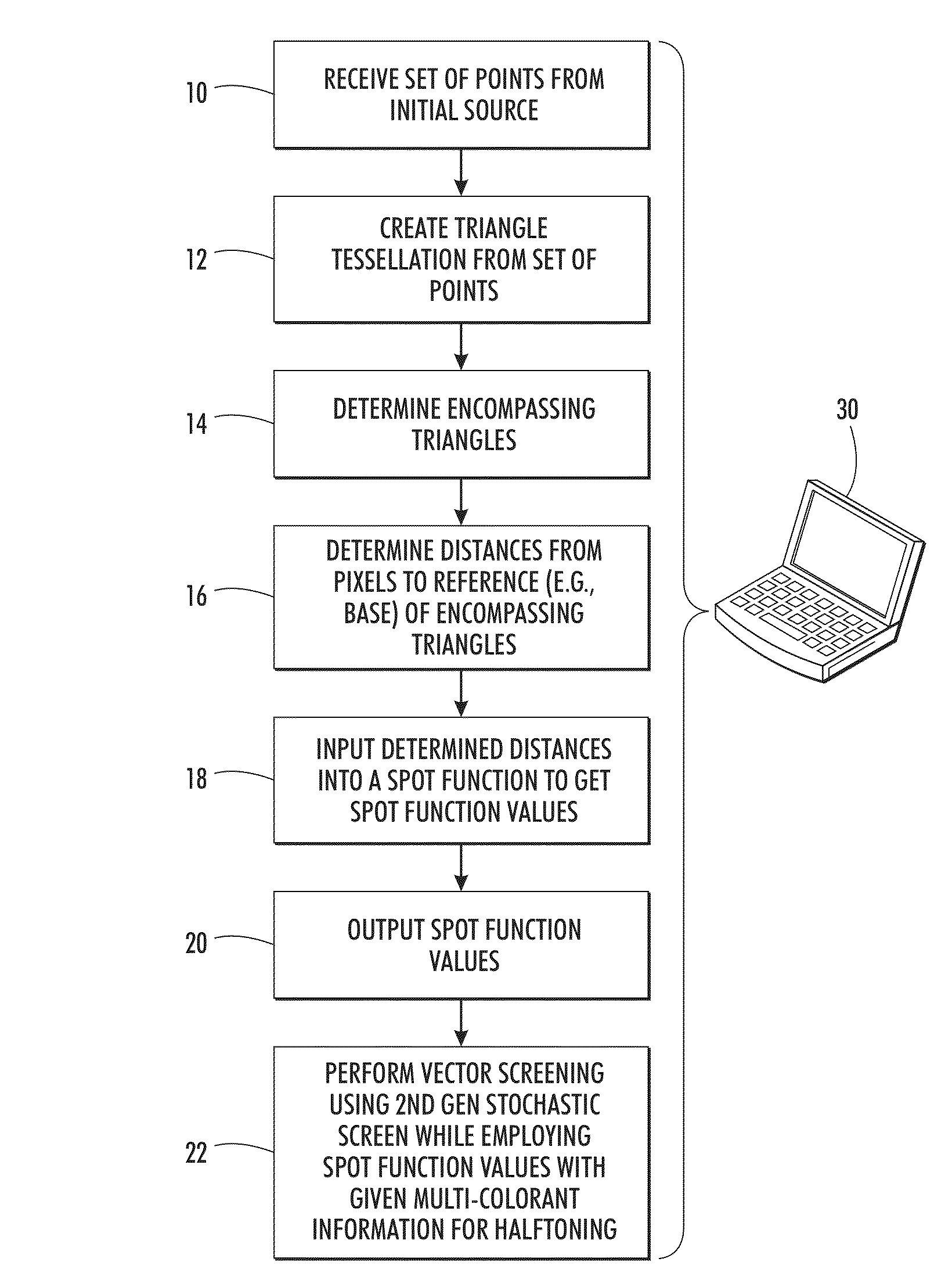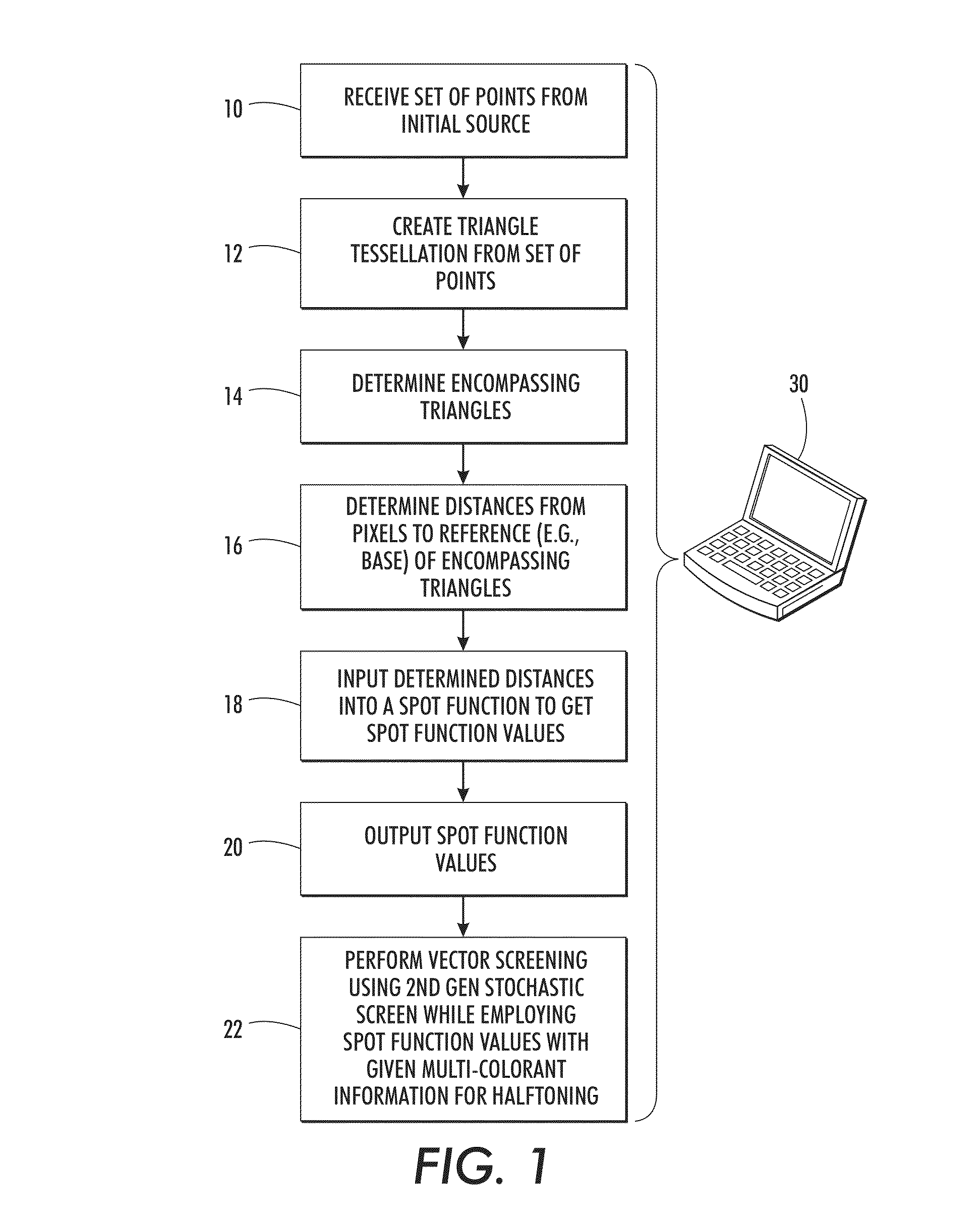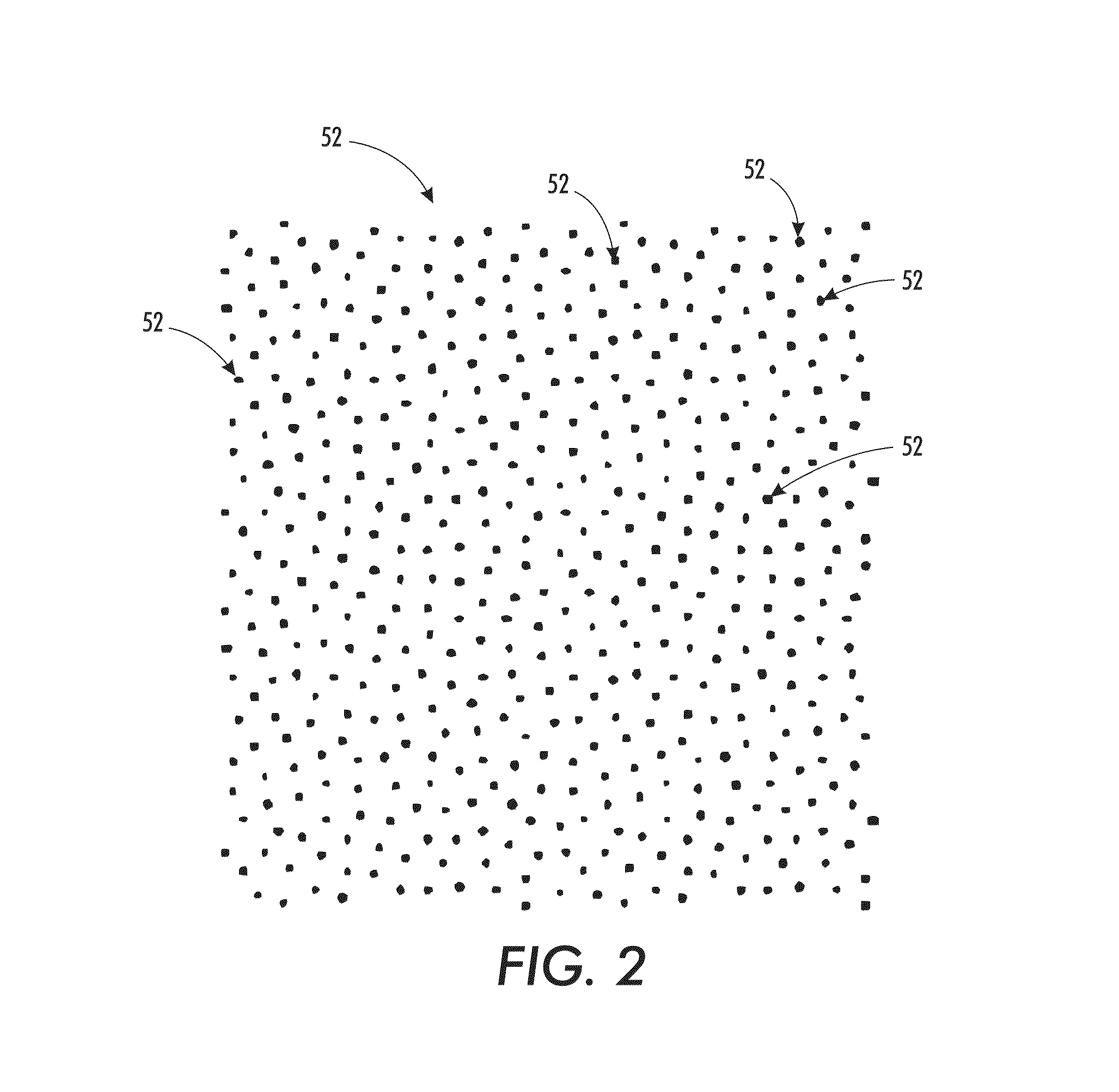2nd generation dot-off-dot stochastic halftone
a stochastic halftone and halftone technology, applied in the field of methods and systems for printing, reproducing or displaying images, can solve the problems of undesirable low spatial frequency correlation, inability of typical computer printers and typeetters to print individual halftone dots in infinite numbers of sizes, etc., and achieve the effect of facilitating the generation of halftone images
- Summary
- Abstract
- Description
- Claims
- Application Information
AI Technical Summary
Problems solved by technology
Method used
Image
Examples
Embodiment Construction
[0026]The above-described problem is solved by performing 2nd generation vector stochastic halftoning. Vector screening or halftoning uses multiple colorants to make a halftone threshold decision. The described systems and methods employ a single stochastic screen defined up to a specified transition level. The dots at the specified level are connected to form a triangle tessellation with an associated spot function. For up to 3 colorants, the algorithm uses a vector screening method that is equivalent to a first colorant dot being grown from the vertices, second colorant dot grown from the triangle center, and a third colorant dot grown from the side midpoints. Growth in this manner ensures separation of colorants up to a certain density level. In cases where fourth colorant is to be used at a given pixel, the fourth colorant can be added using methods typically used for clustered screens, such as stochastic screening of the lightest colorant (i.e., the colorant having the highest ...
PUM
 Login to View More
Login to View More Abstract
Description
Claims
Application Information
 Login to View More
Login to View More - R&D
- Intellectual Property
- Life Sciences
- Materials
- Tech Scout
- Unparalleled Data Quality
- Higher Quality Content
- 60% Fewer Hallucinations
Browse by: Latest US Patents, China's latest patents, Technical Efficacy Thesaurus, Application Domain, Technology Topic, Popular Technical Reports.
© 2025 PatSnap. All rights reserved.Legal|Privacy policy|Modern Slavery Act Transparency Statement|Sitemap|About US| Contact US: help@patsnap.com



